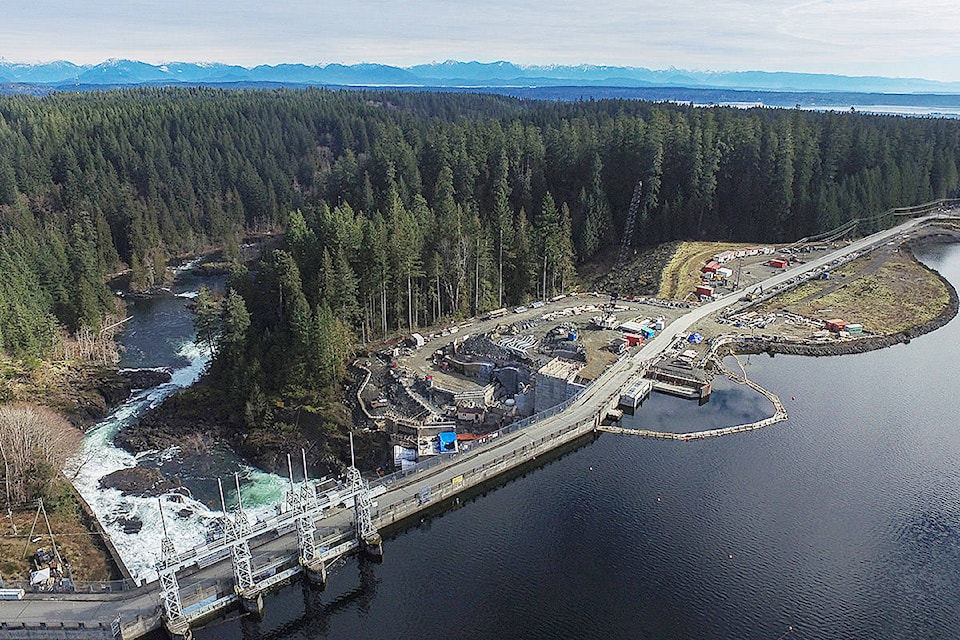The current volume of water in the Campbell River reservoir system is lower than normal, BC Hydro says.
And without significant rain between now and June, summer watershed recreation users will see water levels continue to be lower than normal in the reservoirs.
We have come through a dry February and March where precipitation was 65 per cent and 26 per cent of normal, and while April has recovered with precipitation at 160 per cent of normal to date, the temperatures have meant this was mostly added to the snowpack, BCHydro spokesperson Stephen Watson says.
Water inflows into the Campbell River system have been low with the March monthly inflow just 39 per cent of average. Inflows are picking up slightly from some recent rain and the beginnings of the snowmelt. The Upper Campbell Reservoir/Buttle Lake is currently at about 214.8 metres, which is about 2.5 metres below average.
“We have a ways to go, as we look to the spring and summer snowmelt to increase the reservoir levels and water storage capacity as we move through the summer,” Watson said.
BC Hydro’s reservoir level forecast, which is subject to change based on weather, may see the Upper Campbell Reservoir/Buttle Lake in a similar position as it is now come the May Long Weekend. BC Hydro’s summer reservoir recreational target, from June 21 to early September, does have the reservoir entering the lower side of the 217 m to 220.5 m target. Later in the summer the reservoir looks to peak within the lower side of the reservoir recreation target.
This is the first year of not being able to use water from the removed Salmon River diversion dam facility. About a 12 cubic metres per second (m3/s) average flow rate from the diversion, from April through June, would equate to about a 1.35 m reservoir elevation in the Upper Campbell Reservoir/Buttle Lake.
“We are now managing the system with less water storage options than we’ve had available to us in the past,” Watson said.
For more see: VIDEO: The story of the Salmon River Diversion Dam removal
BC Hydro’s February to September water supply forecast is for water inflows into the system to be around 91 per cent of normal, based on their April forecast. This may fluctuate based on the actual weather conditions.
“We have been coordinating the downstream river flows by balancing water releases down Elk Falls Canyon from our John Hart dam spillway gates and from the old generating station,” Watson said. “The third of the six generators/turbines will be permanently shut down on May 7. This will mean continued higher than normal flow releases down Elk Falls Canyon.”
For public safety, BC Hydro is continuing to advise the public to stay away from Elk Falls throughout May where flows may fluctuate up to 65 m3/s, or up to about 16 times the base flow rate of 4 m3/s. In early May, as flow tests continue with the new valves and water bypass facility, downstream Campbell River flows may fluctuate between about 100 m3/s and 125 m3/s. When flows are increased they will largely be done at night for public safety.
“Since last week, BC Hydro and John Hart project contractor InPower BC having been doing very well in transferring flows from either the dam’s spillway gates, the new water release valves, the new water bypass facility and the old powerhouse in seamlessly keeping the downstream river flows essentially constant,” Watson said. “This close coordination work will continue.”
